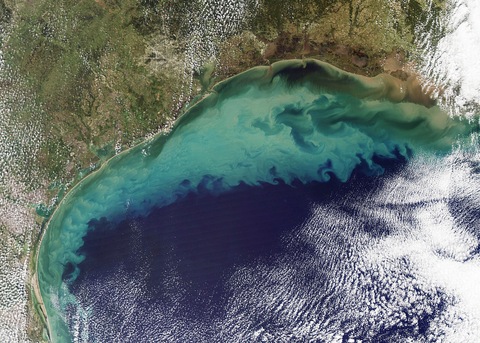Photo: PBS
“Most humans are said to be composed 90% of water, but for those of us who grew up on the Gulf of Mexico, I think that other 10% must be shrimp.” –Jimmy Buffett
Anyone who’s watched the movie Forrest Gump knows that the Gulf has a strong culture of fishing, particularly shrimping. Curious to know more, I picked up Shrimp: The Endless Quest for Pink Gold by Jack Rudloe, an examination of the economics, environmental costs and hijinks entailed by shrimping on our coasts. In these brackish bayous and marshes, juvenile shrimp fatten on bits of algae attached to vast fields of sea grass. Later, they migrate out to the sea, where they are scooped up by trawler nets and flash-frozen in ship holds until they can be brought ashore.
It has never been easy to make a living as a shrimper, with constant battles from sharks tearing holes in nets to outrunning hurricanes. Back in the 1970s though, shrimping was the key to the American Dream, where you could rise through the ranks from deckhand to captain, to boat owner, to fleet owner, to seafood processor. When the shrimp were “running,” the waters seemed to explode with shrimp, in schools so thick they were swimming on top of the water. When word got out, hordes of shrimpers would sprint to cast their nets and jump on the pink gold rush. Then, as suddenly as it had begun, the run would be over. Captains might be $100,000 richer, and celebratory revelry would begin that night on shore.
These days, shrimp—not to mention shrimp runs—are increasingly rare. Consolidation in the seafood industry has led to large corporations dominating the harvest, increasing pressure on wild seafood stocks. Meanwhile, a growing danger to the health of the oceans comes from an unexpected source: land. It seems obvious when you think about it, but all the manicured waterfront properties you see along the Gulf’s coasts could only have been built by razing over and filling in wetlands. In fact, it’s estimated that 78% of Florida’s residents live in former wetlands. The loss of these habitats has catastrophic effects on shrimp harvests. Research shows that when land is sealed off by seawalls, nutrient exchange declines dramatically. In one study, scientists found that the loss of organic materials along bulkheaded shores dropped shrimp to one-eighth of their normal population.
Land development has another consequence: run-off from fertilizers, pesticides and other wastes. In particular, run-off from farms in America’s heartland is carried through rivers that spill into the Gulf, concentrating massive amounts of nitrogen and phosphorus from animal waste, sewage and fertilizers. This stimulates widespread algal blooms, and as bacteria feed on the algae, oxygen is removed from the water. The oxygen-depleted water cannot support any life, other than certain types of bacteria, so the area is known as a dead zone. The Gulf already contains a dead zone about 20,000 square kilometers in size, an expanse of water the size of New Jersey. According to fishermen, the water is foul-smelling, oddly gray in color, and leaves your skin stinging, as if attacked by jellyfish tentacles. With each passing year, agricultural run-off intensifies and the dead zone suffocates even more sea life.
When we try to protect seafood stocks, it’s easiest to target the fishermen who are harvesting the product. But let’s not forget the elephant in the room. As Rudloe puts it, “By regulating the shrimpers only, we are saving paper clips while the corporation is going bankrupt.” As we implement measures to limit catch sizes and regulate trawler nets, we should also strive to limit waterfront development in valuable estuaries and create riverbank buffer zones to prevent agricultural run-off.
Shrimping as a way of life is fading in Gulf communities, but not all shrimpers have thrown in the towel. If we act now, we can create a sustainable food system where the ocean is not treated as collateral damage for development on land.
